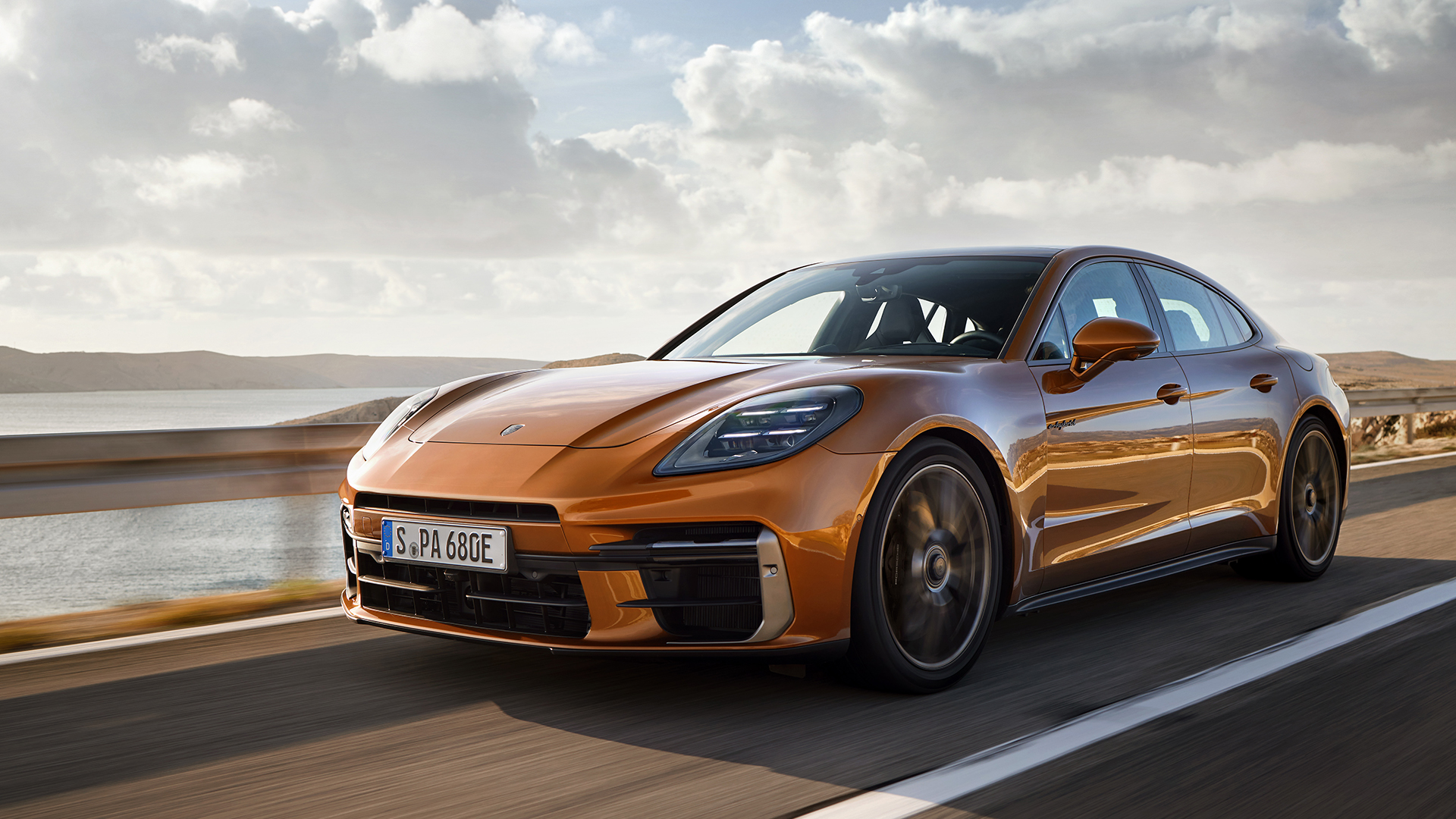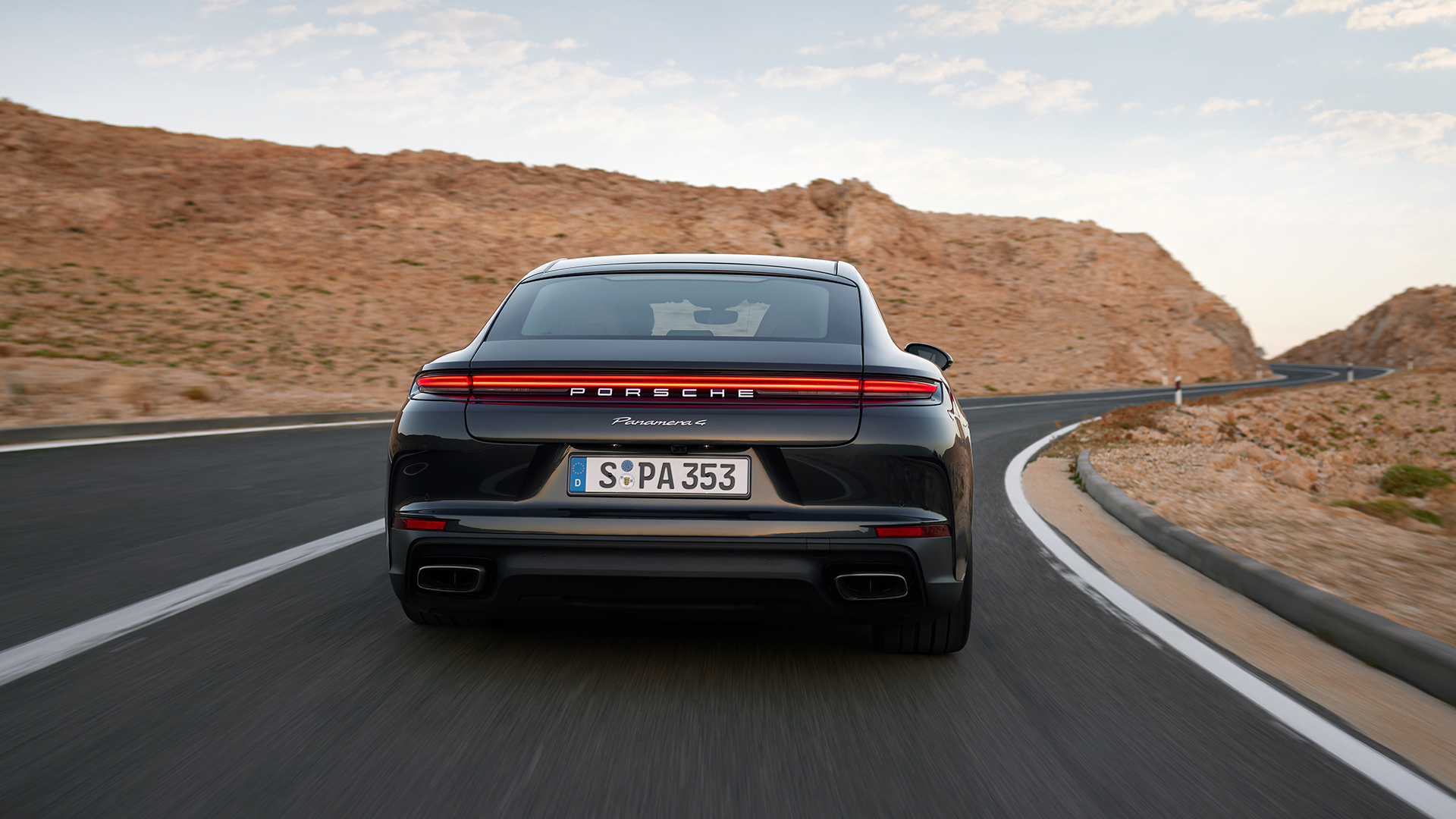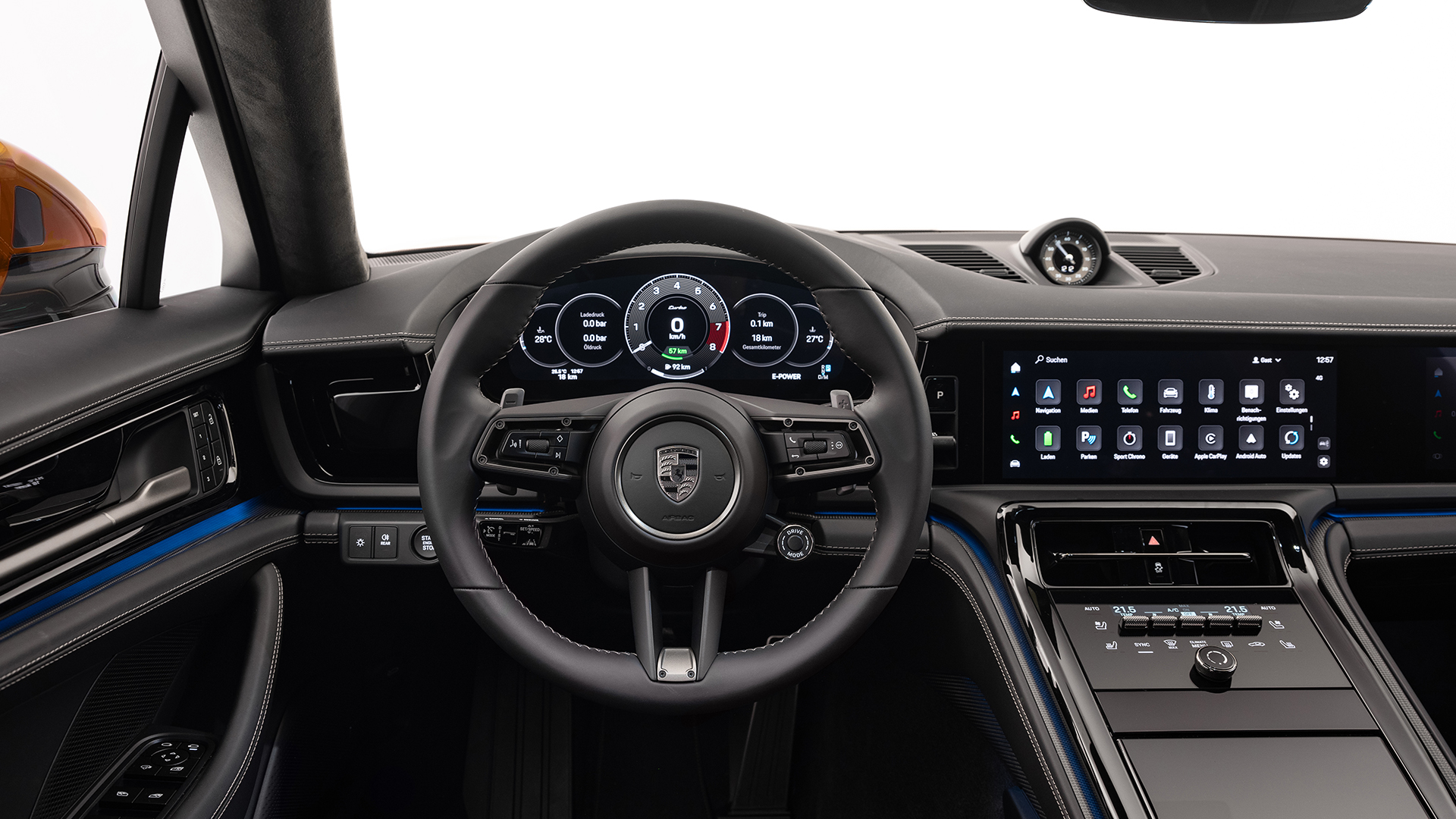The new Panamera is Porsche's most luxurious car to date – and I've driven it
Trick hydraulic suspension and screens galore

Despite Porsche officially becoming an SUV manufacturer a long time ago (today, over half of its global sales are from high-riding crossovers), it rarely strays from its sports car heritage.
For example, many Macan and Cayenne variants can still happily embarrass a throng of modern performance cars on the race circuit, while the cockpit of even the most family-friendly models can trace a direct lineage back to the original 911.
Now, I’m not suggesting the new third-generation Panamera ditches all sporting intentions, but this is hands-down the most luxurious Porsche I have ever driven and at the beating heart of this is a new state-of-the-art suspension system.
As standard, the long, low and powerfully-styled Panamera comes with dual-chamber, two-valve air suspension with Porsche Active Suspension Management (PASM), which is a technical way of saying that software can directly influence how firm or pliant the ride becomes, all adjustable via toggles on the steering wheel.

This is nothing new, but the German manufacturer has gone one step further by introducing its latest Porsche Active Ride system, which will be available as an option for the Turbo E-Hybrid models.
To cut a long and very technical story short, the system sees all four two-valve shock absorbers connected to an electrically-operated hydraulic pump. The result is lightning fast reactions at any corner of the vehicle, at any time.
Although Porsche won’t like the analogy, it's worth bringing to mind the sort of West Coast lowrider you might see "hopping" along the road in a Snoop Dogg video. In fact, a Porsche engineer demonstrated the tech with a connected smartphone acting as a controller.
Sign up for breaking news, reviews, opinion, top tech deals, and more.
With smartphone in the palm of my hand, every roll and tip caused the Panamera to mimic my moves, dipping, bouncing and rolling from left to right. Even in the torrential rain of a wintry Leipzig, it put on a hell of a show.
But then a $175,000/£140,000/€192,000/AUS$280,000 sedan should probably know how to work a crowd.
Leveling the playing field
With Porsche Active Ride fitted, the heavily-camouflaged prototype Panamera I approached almost jumped to attention as I pulled the door handle. The suspension launched from its default low resting position to a more convenient height that allowed me to seamlessly slip into the sculpted seats.
Similarly, the entire rear section can drop (à la Range Rover) to assist loading heavy items into the trunk, but it really comes to life out on the road. Under heavy braking, the nose gently rises to counteract the typical forward inertia felt by those onboard.
In the same breath, the nose will dip slightly when the accelerator is floored to negate that whiplash feeling that occurs in mightily powerful cars like this. Bear in mind the upcoming Panamera Turbo E-Hybrid will sprint to 62 mph in 3.2 seconds and a top speed of 196 mph.

This is thanks to a four-liter V8 turbo engine that is paired with a 140 kW (190hp) rear electric motor. Only now, Panamera will happily cruise around on electricity alone for 56 miles, according to the combined WLTP cycle. A new 11 kW on-board AC charger shortens the charging time to a very precise 2 hours and 39 minutes.
To ensure its new-fangled suspension could cope with the massive amount of performance on tap, Porsche installed a refreshed ECU that’s dedicated solely to chassis control. The electrical system can react in under 25 milliseconds, meaning the Active Ride suspension comes into play much faster than the physical acceleration.
Having a suspension system like this that reacts to inputs in such an obvious way is a little disconcerting at first and, in all honesty, doesn’t make for a particularly engaging driving experience. But that’s not the point.
Sure, the system handily "leans" into corners, but those wanting a racier drive will want to switch the system off, which is easily done.
However, for passengers (particularly those traveling in the rear), Porsche Active Ride neatly blends into the background, keeping the vehicle beautifully level at all times and handily disguising your chauffeur’s lack of finesse on the accelerator pedal.

A tech-laden cockpit
Alongside the more sumptuous massaging seats, increased legroom and overall premium cockpit ambience, Porsche has made sure the new Panamera is more connected than ever. After all, Taycan (and its plethora of screens) has proven extremely popular with customers, meaning Panamera now has a high-tech rival in the roost.
Up front, there’s the same highly customizable, curved 12.6in display that takes care of driving information, such as speed, navigation and vehicle settings. This is paired with a 12.3-inch touchscreen infotainment panel in the middle, as well as an optional 10.9-inch touchscreen that offers bespoke entertainment on the go to the front passenger.
Porsche has also extended its Apple CarPlay functionality, so features like air conditioning, those seat massagers and ambient lighting can be controlled directly via Apple CarPlay or with the Siri voice assistant.

As we mentioned in our sneak peek inside Porsche's techy new Panamera interior piece, the most luxurious models are reserved for the Asian markets, where a long wheelbase Executive version takes opulence to the next level.
Large screens mounted to the backs of the rear seats act as infotainment devices for rear passengers, that are able to stream online content or mirror smartphones. Sumptuous carpets and rear seats that can now recline even further make it a first class way to travel.
Of course, Porsche is going to ram home its performance credentials, even going so far as to slap Turbo on its E-Hybrid model. But the overall refinement, the cutting edge hydraulic suspension system and the high-tech interior make this Panamera feel more like a limousine than ever.
The big wigs in Stuttgart might disagree, but this might be one of the first Porsche models I’d rather experience from the rear thrones, rather than the driver's seat.
You might also like

Leon has been navigating a world where automotive and tech collide for almost 20 years, reporting on everything from in-car entertainment to robotised manufacturing plants. Currently, EVs are the focus of his attentions, but give it a few years and it will be electric vertical take-off and landing craft. Outside of work hours, he can be found tinkering with distinctly analogue motorcycles, because electric motors are no replacement for an old Honda inline four.